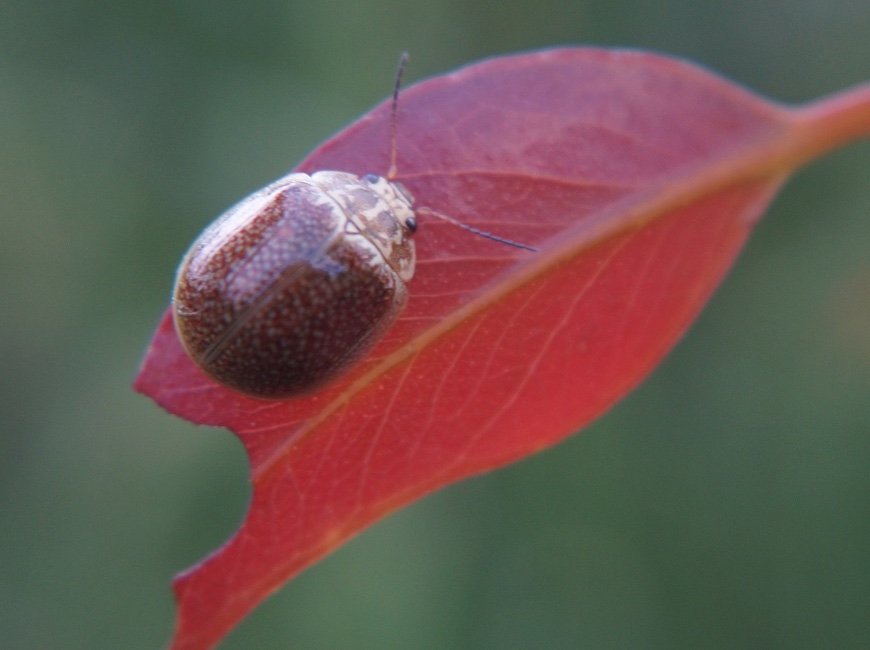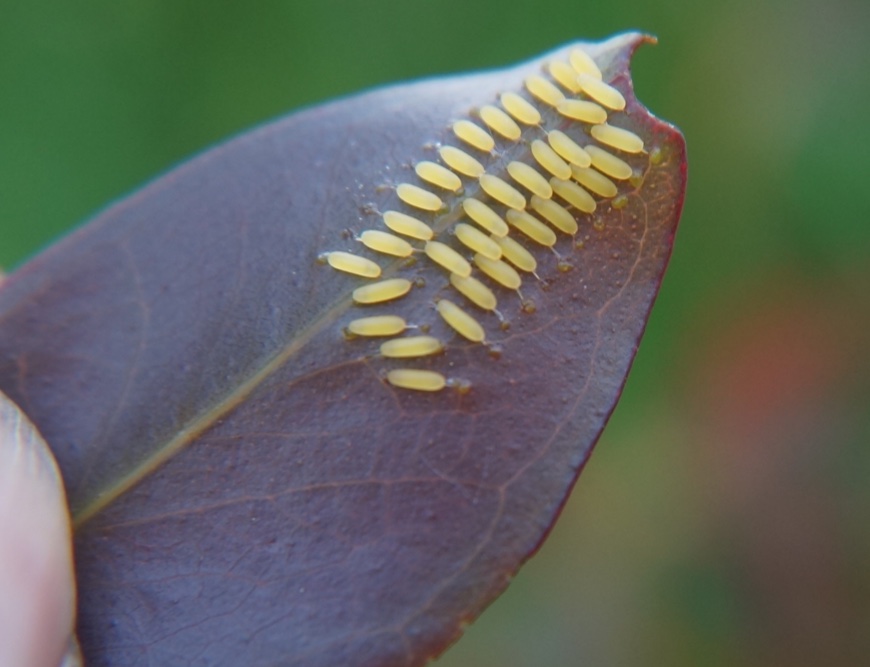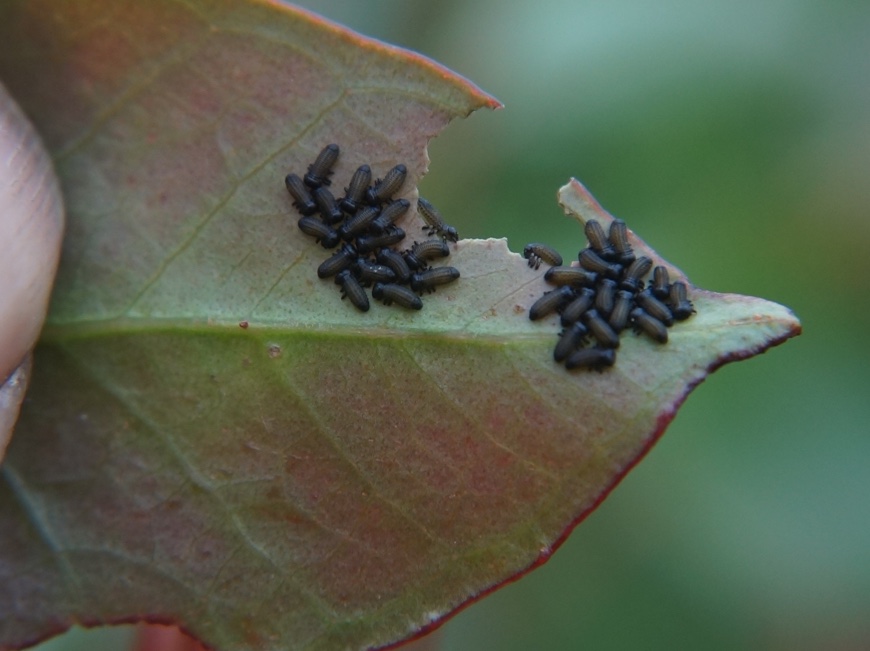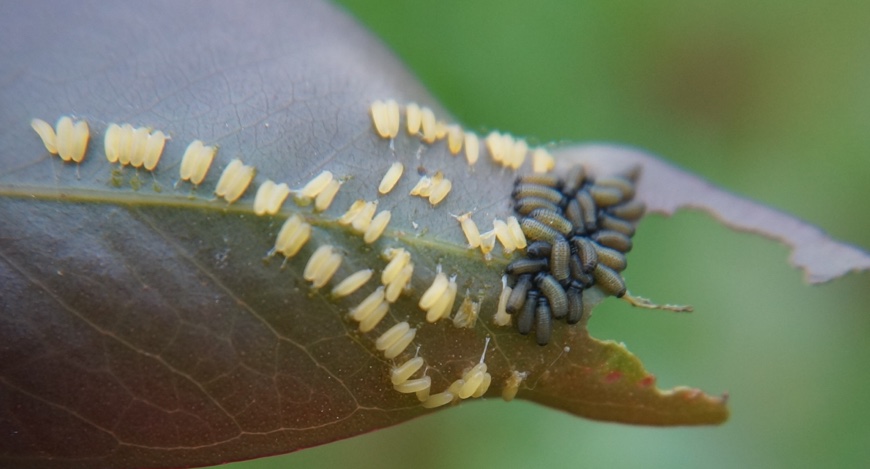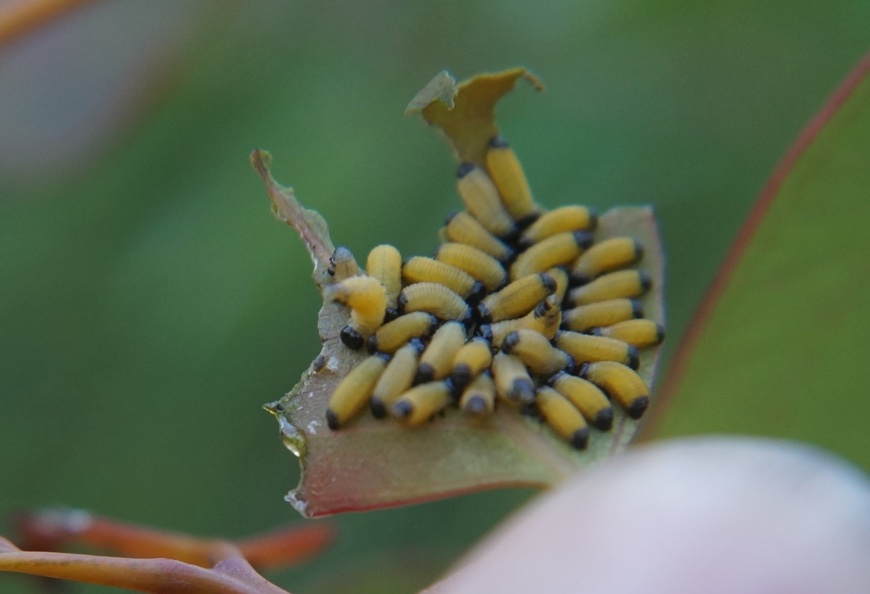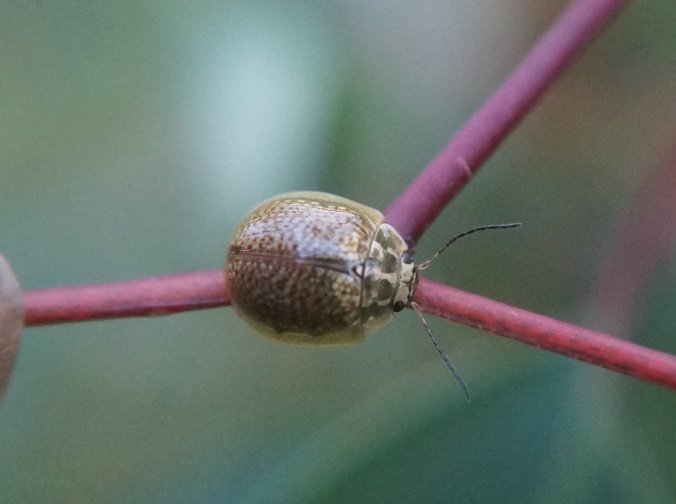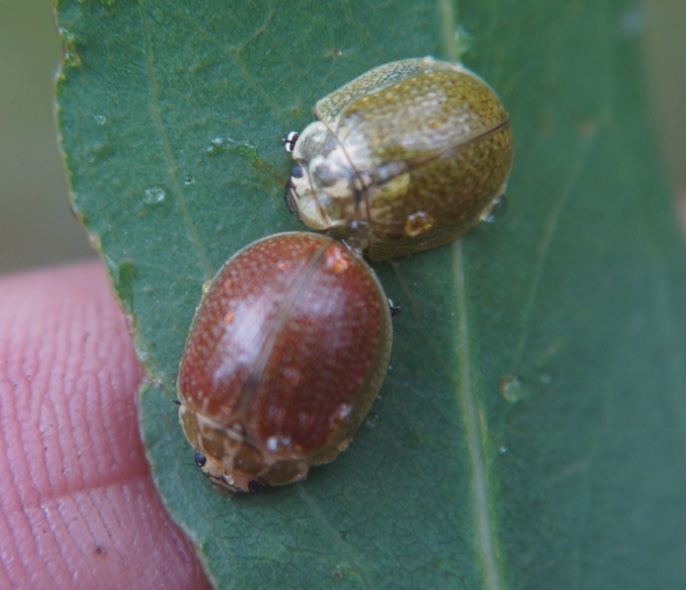PESTS AND DISEASES OF FORESTRY IN NEW ZEALAND
Eucalyptus variegated beetle, Paropsisterna variicollis
(Note, not spelled Paropsisterna varicollis)
- Update on eucalyptus variegated beetle (EVB), Paropsisterna variicollis
From Forest Health News 287, March 2019. A parasitised egg batch of EVB. Image: Huimin Lin (University of Canterbury). This eucalyptus-feeding paropsine beetle pest, first reported in New Zealand in 2016,… - Eucalyptus variegated beetle creates concern for eucalypt growers
Toni Withers, Rebecca McDougal, Michelle Harnett and Tara Murray, New Zealand Tree Grower Magazine May 2018. Annoying Australians are over here and eating ‘our’ eucalypt trees. Seven different tortoise beetles,… - Eucalyptus variegated beetle (EVB) marches on
From Forest health News 279, February 2018. We last updated readers on the Paropsisterna variicollis (EVB) incursion in Hawke’s Bay in September last year. At that time, the beetle had… - Eucalyptus variegated beetle marching on
From Forest health News No. 274, August 2017. Last summer, the Australian pest Paropsisterna variicollis, usually called the eucalyptus variegated beetle (EVB) in New Zealand, was known to be infesting… - Eucalyptus variegated beetle, August 2017
Peter Berg, New Zealand Tree Grower, August 2017. On 8 March 2016 a eucalyptus foraging beetle new to New Zealand was collected by SPS Biosecurity as part of the forest… - Biosecurity Inspector reports Paropsisterna variicollis in Hawkes Bay
From Forest Health News 269, August 2016. Biosecurity inspector Brent Rogan from SPS Biosecurity carried out an inspection of a farm eucalypt shelterbelt running adjacent to Esk Forest in Hawke’s Bay… - Report on Paropsisterna variicollis, Hawkes Bay November 2016
Two sites visited, Mc Neil's (Waimarama) and Saathof's (Crownthorpe), Hawkes Bay: Mc Neils Waimarama, (3-5 year old trees) Mating pair of Schellemberg soldier bugs with Paropsisterna variicollis prey Large numbers of first,…
Paropsisterna variicollis (Eucalyptus Variegated Beetle or EVB) is a new Eucalyptus pest incursion in New Zealand (Discovered 2016).
